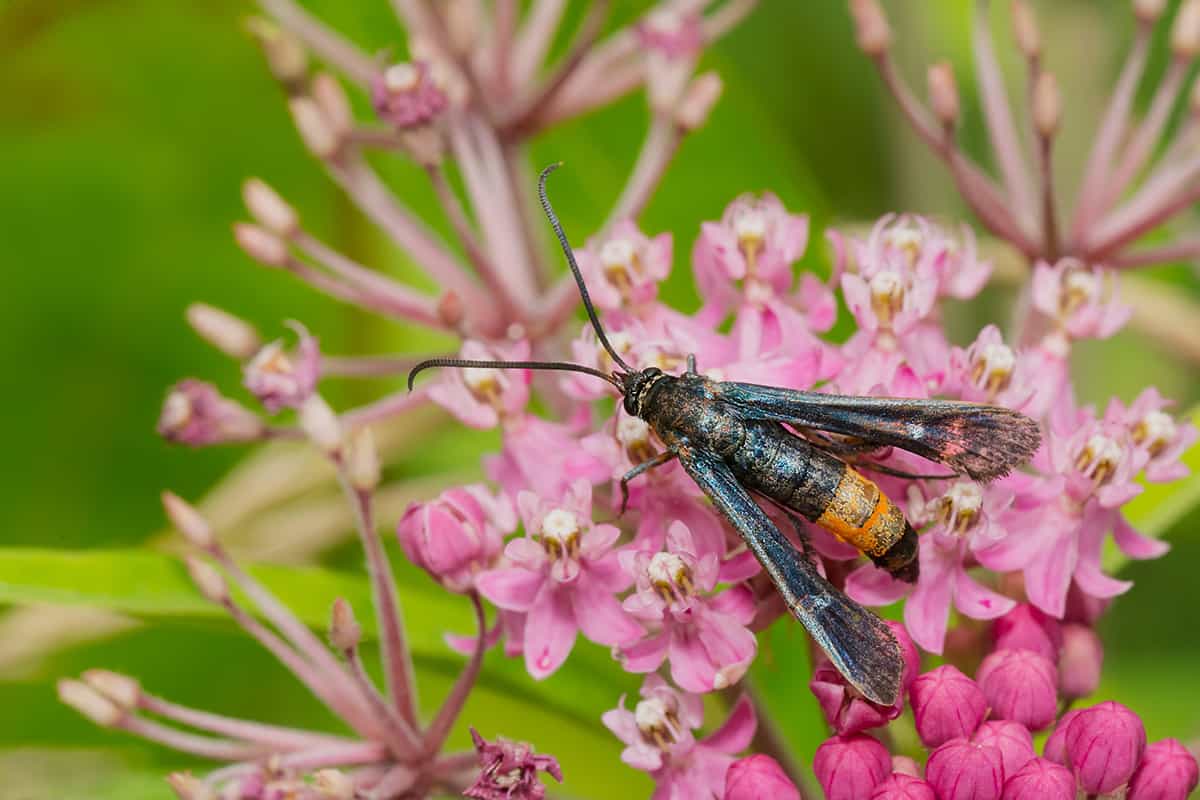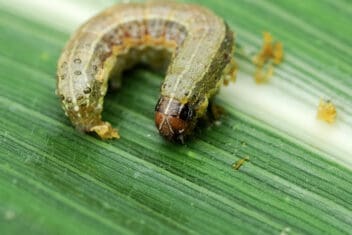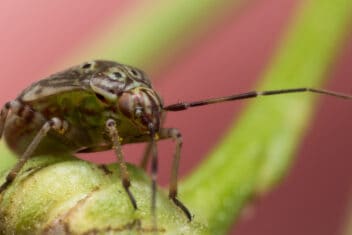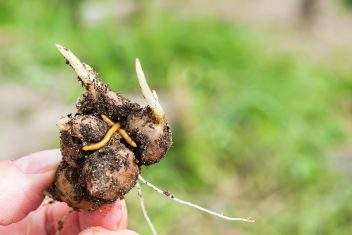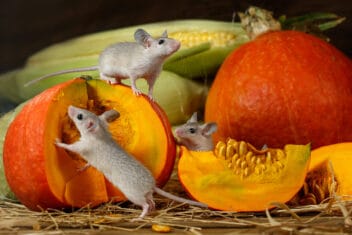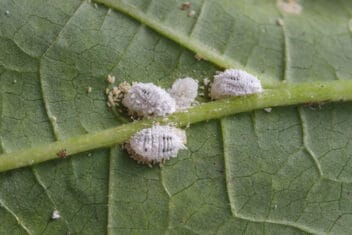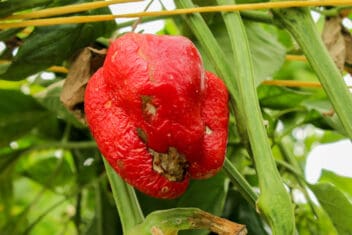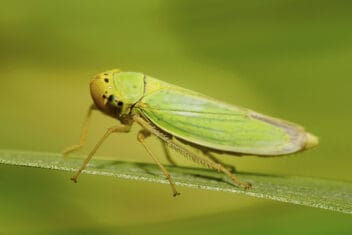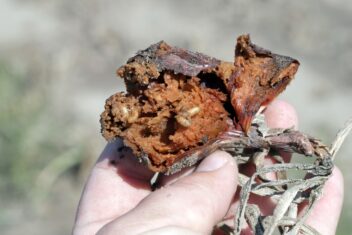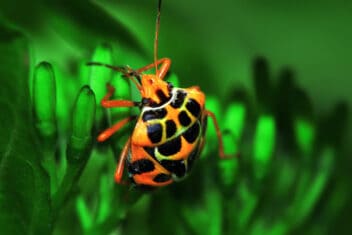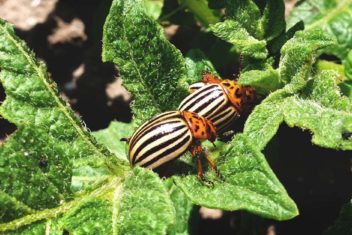The peachtree borer is one of the worse pests that infect peach, cherry, plum, and other stone fruit trees. The immature larvae are responsible for the destruction, chewing underneath the bark of the trunk and roots. If you grow fruit trees, you need to know about these pests and how to handle a possible infestation.
Let’s take a look at peachtree borers, how they damage your fruit trees, and how to stop them.
What is a Peachtree Borer?
Peachtree borers (Synanthedon exitiosa) and lesser peachtree borers (Synanthedon pictipes) are the caterpillars of clearwing moths. The adult moths don’t cause problems. Instead, the grub-like larvae are the issue, chewing on the bark and roots of stone fruits. These pests don’t attack the fruit; they eat the tree itself.
These pests are found across the entire United States and Canada. If stone fruits grow in that region, then these pests will be present. They’re a common threat to both commercial and home fruit tree growers.
Since the larvae are the most problematic, it’s important to know how to identify these pests. The larvae range from white to beige and brown, measuring an inch or longer. You’ll notice that the chewing end of the larvae gets darker with time.
The adult peachtree borer moths have clear wings, looking like a wasp. The females have a metallic blue hue with an orange band around their abdomen. Males are smaller with yellow stripes.
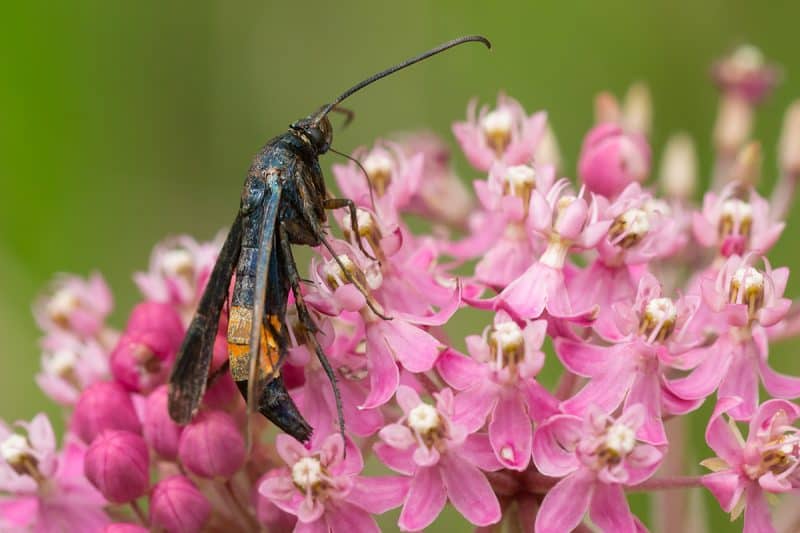
The Lifecycle of a Peachtree Borer
A full lifecycle for a peach tree borer takes one year to complete, so it isn’t as quick as some other pests, giving you time to figure out what to do so long as you spot them early on. The problematic stage is the larval one; the other stages don’t cause damage to the trees.
The peachtree borer larvae hatch out of their eggs and immediately start to tunnel through the sapwood of the trees, finding all of the cracks and wounds in the bark. They continue to tunnel through the tree until the onset of cold weather, and then they spend the winter below ground under the bark.
When warm temperatures return, the larvae return to feeding on the tree until the mid to late spring when the larvae mature, changing into the pupal stage between late May and early July. This stage only takes around one month, and the adults emerge. Adult Peachtree borers are a moth that resembles a wasp, but they are incapable of stinging and are generally harmless.
The adults mate and lay eggs during July and August. Females lay eggs on the bark of the tree near the base, and the eggs hatch 10 days later. The cycle restarts at this point.
Signs of a Peachtree Borer Infestation
These pests bring serious damage to stone fruit trees, destroying the tree’s vascular system and allowing pathogens to invade an already weakened tree. Don’t underestimate this pest; the peachtree borer and lesser peachtree borer cause more damage to peach trees than all other pests combined.
The damage caused by these borers stops the movement of water and nutrients up the trunk of the tree, so you will notice wilting or stunted growth. Fruiting might slow or entirely stop.
Once a larva bores into the trunk of your tree, a guy, reddish-brown substance oozes out of the wounds. The leaves and branches will start to show signs in mid to late summer as they continue to feed. A severely infested tree might die.
How to Prevent Peachtree Borers
Preventative measures are key; you don’t want borers to get established in your fruit trees at all. Most trees survive small attacks, but large infestations regularly kill trees. Once the larvae enter the bark, an infestation is hard to manage, so prevention is crucial.
Here are some tips to prevent peachtree borers.
Clear Wild Trees Away
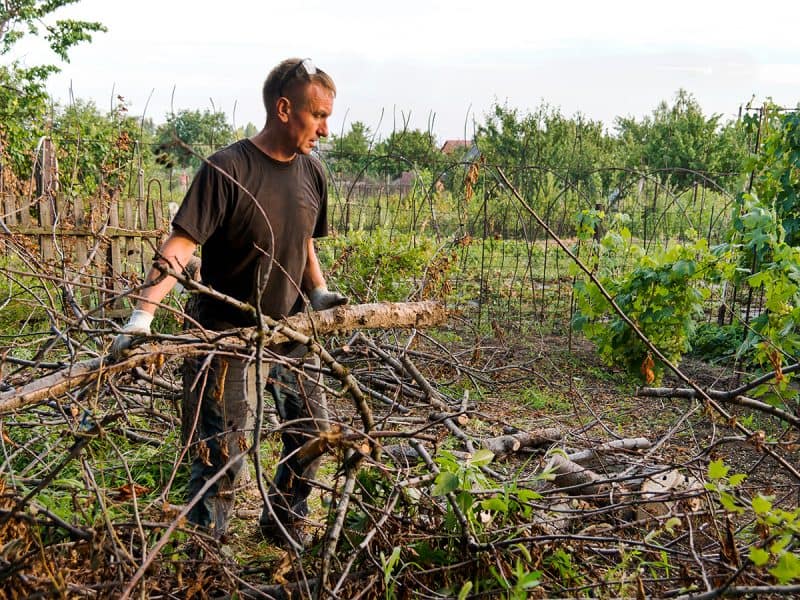
Peachtree borers live in wild trees, so clear away wild plum, cherry, or other stone fruit trees in your woodlot. Female adults are attracted to diseased, damaged, and vulnerable trees, so make sure you clear them off of your property. You also should take out any older fruit trees that harbor borers.
Keep Your Trees Healthy
Healthy trees are less likely to suffer from a serious infestation. Keeping your stone fruit trees healthy should a top priority. Provide the trees with ample water, prune regularly, fertilize as needed, and mulch around the base.
Paint Tree Trunks
Another preventative measure is to paint tree trunks and exposed roots with a powder made of kaolin clay, such as Surround WP. Coat the entire base of your tree, exposed roots, and trunk up 12 inches from the ground. This coating deters adult peachtree borer moths from laying eggs on the tree.
Spread Cedar Chips Around the Base
Here is a simple trick to try. Spread cedar chips around the base of your stone fruit trees because they repel egg-laying adult moths. If you stop the adult moths from laying eggs on your trees, you don’t have to worry about the larval damage.
Encourage Birds
Woodpeckers and other birds love to eat the larvae, often finding them under the bark of the tree. Provide a habitat that local birds enjoy, and they’ll take care of part of the infestation for you.
How to Get Rid of Peachtree Borers
A peachtree borer infestation is easily controlled through the use of insecticides applied at the lower trunk and base of the tree. Luckily, there are ways to eliminate an infestation, but a severe one is hard to stop, so pay attention and try to start control methods as soon as the infestation begins.
Here are some options for getting rid of peachtree borers.
Trap the Adult Borers
The first thing you need to do is trap the adult peachtree borers. As soon as you notice the emergence of adult moths, use pheromone traps or sticky traps hanging around your trees to trap the adult borers. You won’t catch all of them, but you can reduce numbers and it alerts you to their presence.
Spray Neem Oil
One of the most effective ways to get rid of peachtree borers is to begin spraying organic neem oil around the crown of the tree and up the first 12 inches of the trunk. When you apply neem oil, make sure you saturate both the bark and the soil.
Neem oil works because it disrupts the breeding cycle and discourages the adults from leaving eggs on the trunk of the trees. At the same time, neem oil neutralizes the eggs that have already been laid because it penetrates the bark and stops the development of the larvae.
Spray the trees twice per month throughout the season to be as effective as possible. Reapply after it rains.
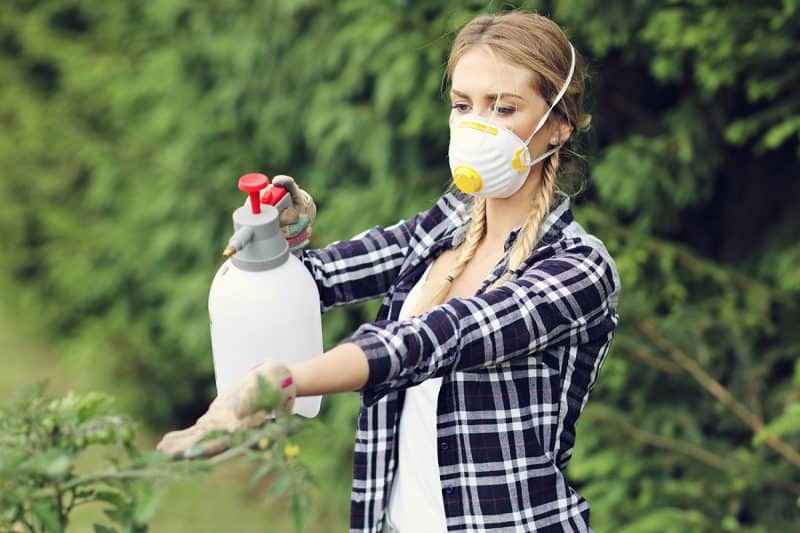
Use Citrus Extract Sprays
Citrus extract sprays repel the adult peachtree borers, so if you spray the trunks of your trees along with the crown of the tree, it’ll discourage the adults from laying eggs. You also can use these sprays as a preventative measure before an infestation begins, spraying your trees in July and August to stop adult moths from finding the trees.
Apply Bt
Bt – Bacillus thuringiensis – is a naturally occurring soil bacteria that kills larvae, depending on the exposure. You can use Bt to eliminate peachtree borers by spraying it directly into the borer holes after clearing out the holes as much as possible.
Release Beneficial Nematodes
Another way to control peachtree borers is by releasing beneficial nematodes; they work tirelessly against these destructive pests. Nematodes attack the eggs, larvae, and pupae, so consider an application in the spring to suppress a borer infestation.
Some studies show that a single spring application suppresses up to 88% of peachtree borers. Two applications – one in the spring and one in the fall – are shown to be 100% effective.
Release Parasitic Wasps
Parasitic wasps help with infestations of lesser peachtree borers. The wasps will parasitize the eggs found on the bark and nearly-hatched larvae that have yet to tunnel into the tree to cause damage.
